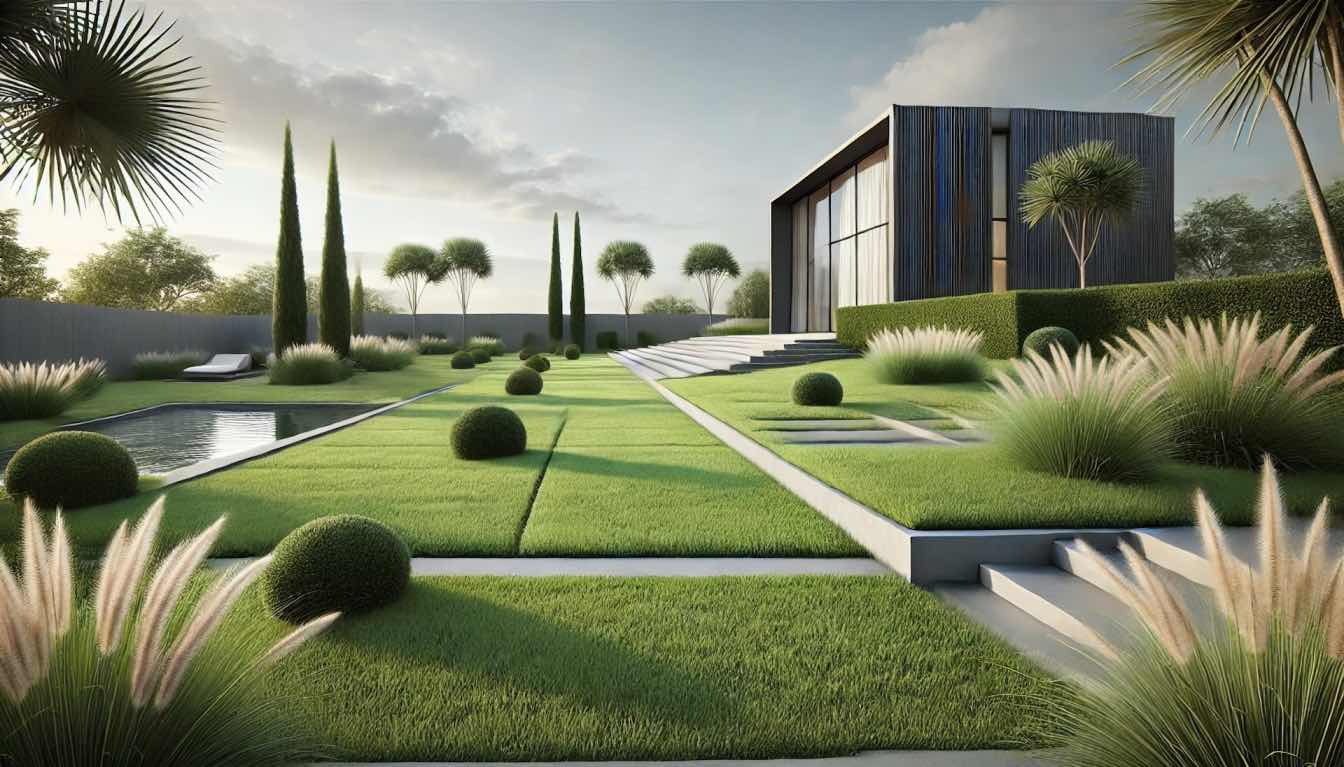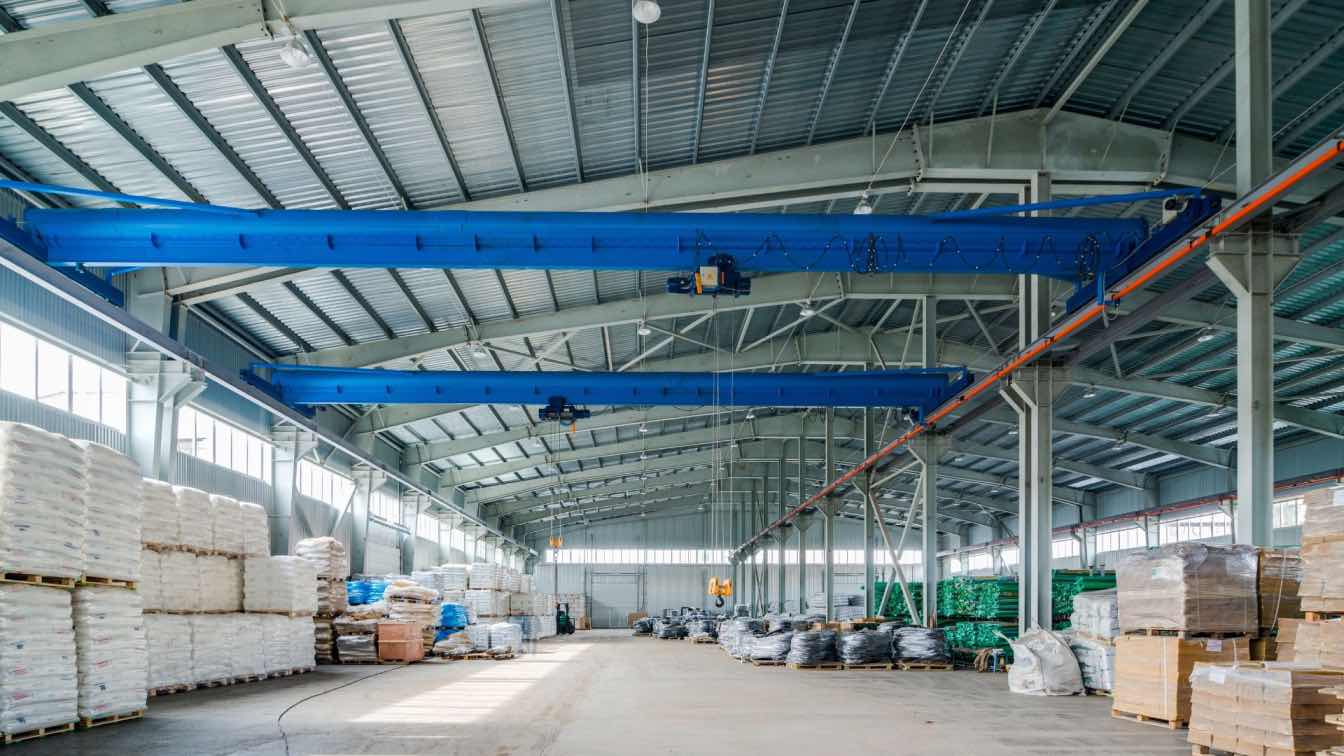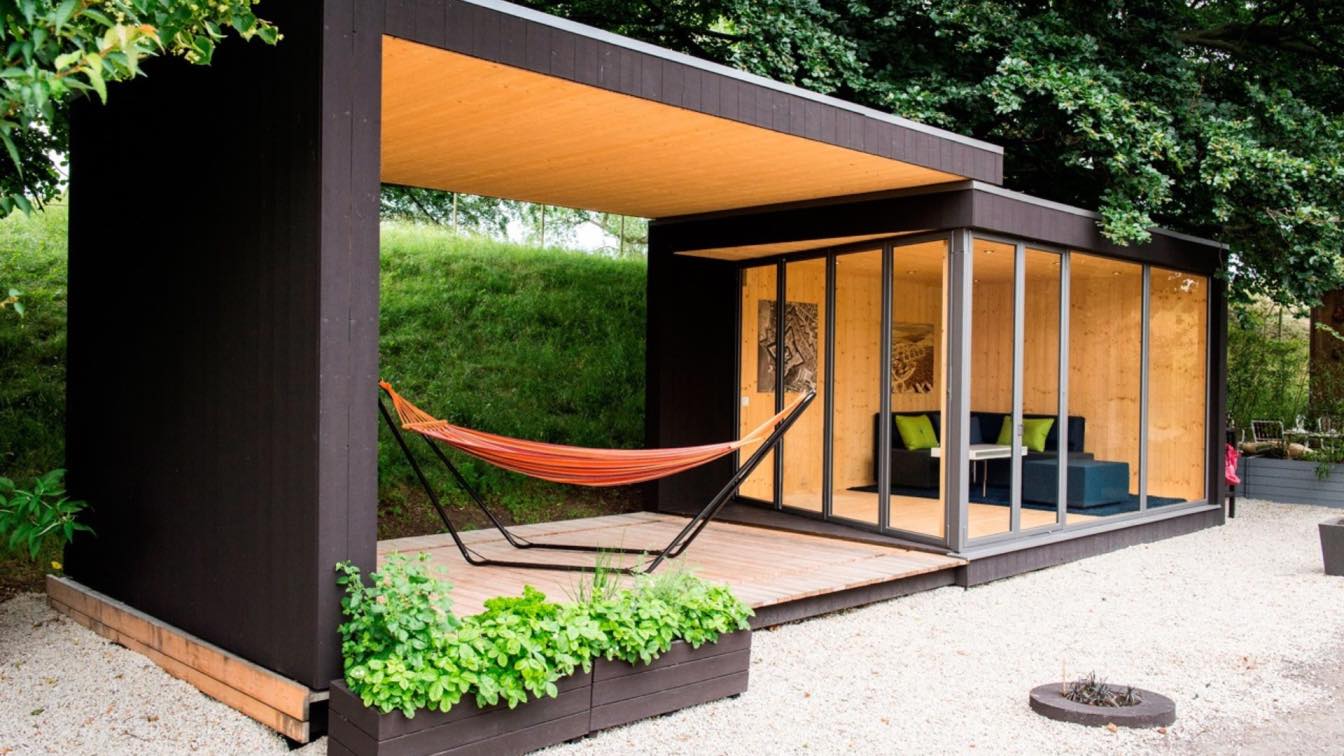Introduction: The Intersection of Minimalism and Landscaping
Minimalism in contemporary architecture involves simple design and the absence of excessive decorative elements.
The well-known maxim "less is more" emphasizes a space's functionality and harmony without overloading it with decorative items.
In minimalist architecture, landscaping is essential alongside the interior design, enhancing the overall aesthetics.
Due to its versatility and adaptability to various design styles, the grass is a perfect addition to modern minimalist projects, providing a necessary touch of nature.
Understanding Minimalist Landscaping
Minimalist landscaping involves creating spaces dominated by simple, functional, and thoughtfully selected elements. Its core principles focus on reducing unnecessary details, allowing natural shapes and materials to stand out.
In minimalist landscape architecture, grass is a crucial element that highlights simplicity, harmony, and the connection between built spaces and nature.
It emphasizes clean lines and creates a seamless relationship between structures and outdoor areas. A carefully maintained lawn brings a sense of order and simplicity, perfectly aligning with minimalist aesthetics.
Grass sods soften sharp edges and neutral palettes typical of minimalism, creating a balance between natural and artificial elements.
The Role of Grass in Minimalist Landscapes
In minimalist landscapes, grass is a versatile and low-maintenance element that introduces a touch of nature into the space, refreshing the entire ambiance.
Thanks to its simplicity and adaptability to various climatic conditions, grass sod is an ideal choice for those seeking visually harmonious, aesthetically pleasing, and nature-integrated spaces.
Grass lawns, as they require little maintenance and infrequent intervention, align perfectly with the minimalist approach—creating a calm, unobtrusive environment radiating elegance.
Green spaces contrast architectural elements, emphasizing clean lines and open spaces of minimalist designs.
Expansive grass areas help make spaces more harmonious while highlighting the design's purity of lines and geometric elements.
Thus, grass contributes to making minimalist landscapes more than mere decoration—it becomes a tool for creating spaces where natural and architectural components complement each other, forming a cohesive whole.
Choosing the Right Grass for Minimalist Projects
Choosing the right type of grass sod for minimalist landscaping projects requires careful consideration of several vital factors. First, the climate in which the grass will grow is crucial for its appearance and longevity.
Additionally, maintenance is critical—minimalist design strives for simplicity, so grass types that require less care and intervention are often ideal.
Aesthetic goals also play a crucial role, as certain types of grass sod better highlight specific minimalist design elements, such as uniform surfaces and clean lines.
Bermuda Grass: Ideal for warm climates and areas exposed to intense sunlight. It is known for its durability despite frequent foot traffic and its ability to grow quickly and cover large areas. Perfect for open spaces requiring a uniform green carpet resistant to high temperatures and heavy use.
Zoysia Grass: Known for its density and adaptability, it suits various climatic conditions. Its resistance to foot traffic and ability to grow in less-than-ideal conditions make it perfect for minimalist projects requiring stable green surfaces with minimal maintenance. Its rich texture and density bring warmth to spaces, especially in combination with Scandinavian or modern minimalist styles that value natural materials and simple aesthetics.
Augustine Grass: A lush and soft choice for shaded areas, offering a rich green surface even in limited growth conditions. Its ability to thrive in shady and humid environments makes it suitable for minimalist landscapes in regions with less sunlight or projects involving large trees or structures casting shadows.
Choosing grass that aligns with the architectural style enhances the overall impression provided by the landscape.
Design Ideas for Minimalist Grass Landscaping
In minimalist landscape design, grass is a key element for achieving geometric precision and an aesthetic balance between natural and urban aspects.
Linear lawns are an excellent choice for perfectly organized, clean lines that guide the eye and create a sense of order.
Such lawns often follow the linear shapes of pathways or architectural elements, offering expansive and organized green surfaces that emphasize simplicity and functionality.
Grass can also be a soft boundary for solid-built elements like concrete paths, stone terraces, or wooden platforms. In these settings, the lawn softens the sharp lines of solid materials, adding a layer of naturalness and visual harmony.
Combining grass with minimalist water features and stone gardens opens additional possibilities for creating calming and relaxing landscapes. Simple water features, like pools, fountains, or reflective surfaces, enhance a sense of openness, while grass provides a natural base harmonizing with water surfaces.
Adding stone gardens—with pebbles of various sizes and textures—creates further contrast and complexity, maintaining the minimalist look while enriching visual details. Grass links water, stones, and greenery, creating a balanced whole radiating harmony.
Sustainability and Low-Maintenance Solutions
Sustainability has become a central principle in modern minimalist designs, as eco-friendly practices conserve natural resources and enable simpler and longer-lasting landscaping projects.
In minimalist landscaping, which focuses on functionality and harmony with natural surroundings, sustainability is a crucial design aspect that helps balance aesthetics and environmental responsibility.
The eco-conscious design relies on smart choices of materials and plant species to minimize environmental impact and create a landscape that lasts without frequent maintenance or high costs.
Drought-Resistant Grass Varieties: Bermuda and Zoysia grasses are excellent solutions for modern landscapes in warm climates. These types require significantly less water, making them eco-friendly during drought and high temperatures.
Smart Irrigation Systems: Modern irrigation systems with moisture sensors allow precise water management, activating only when necessary to prevent excessive water use. Techniques like drip irrigation reduce water evaporation, and irrigation management apps offer additional control and savings.
Combining smart systems with low-maintenance grass ensures that minimalist landscapes are sustainable and aligned with today's ecological standards.
Conclusion: Grass as a Foundation for Minimalist Landscaping
Grass takes center stage in minimalist landscaping, providing the perfect foundation that unites aesthetics and functionality.
In such designs, grass brings visual simplicity and elegance, creating expansive, uniform green areas that highlight minimalist spaces' clean lines and architectural precision.
Its green hue contrasts minimalist forms, while its simple structure contributes to a calm, airy ambiance.
Beyond its visual qualities, grass in minimalist landscaping offers significant functional benefits. It is easy to maintain, especially with varieties requiring less water and minimal fertilization, enhancing sustainability and cost efficiency.
Grass is a natural element that reduces dust, absorbs noise, and creates more pleasant microclimatic conditions, making spaces more comfortable for living and staying.
These characteristics enable the creation of spaces that align aesthetically with minimalist design while remaining sustainable and functional.





